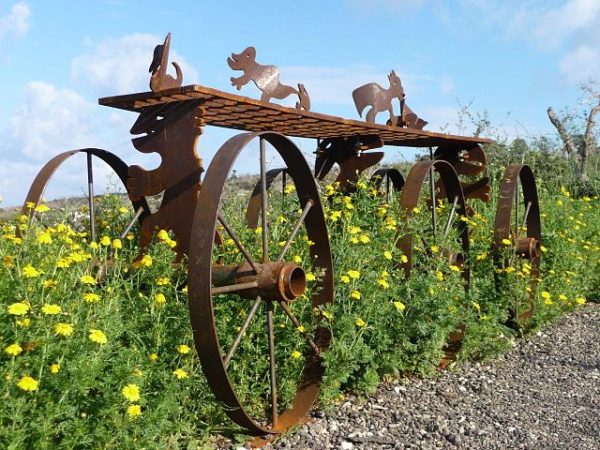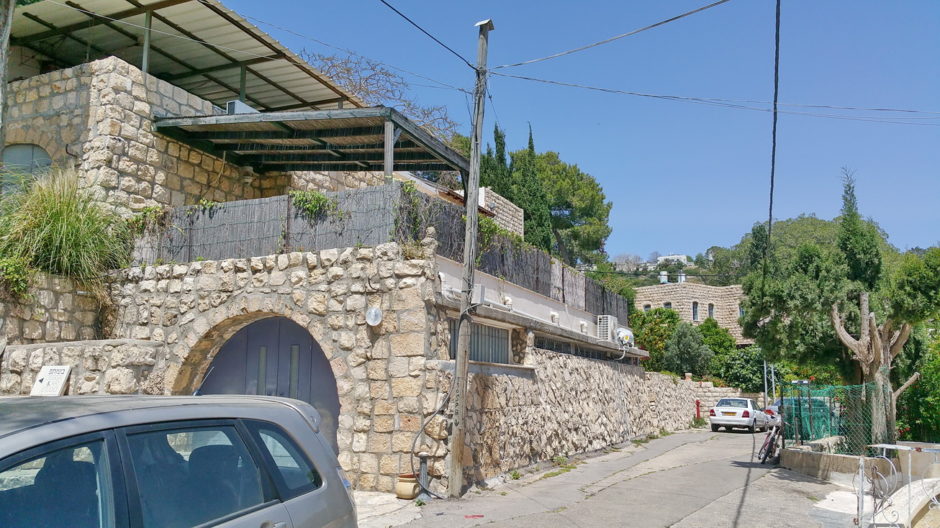Tucked into the lush green hills of the forested Carmel mountain range is Israel’s only artists’ village, Ein Hod. Founded almost 65 years ago by a Romanian Jewish painter, it’s a serene retreat far from the hustle and bustle of Israel’s coastal plain.

A short drive from the port of Haifa, Ein Hod is a pastoral place of Arab and Ottoman stone-clad buildings trailing red and white bougainvillea and of manicured gardens facing the shimmering Mediterranean Sea in the distance.
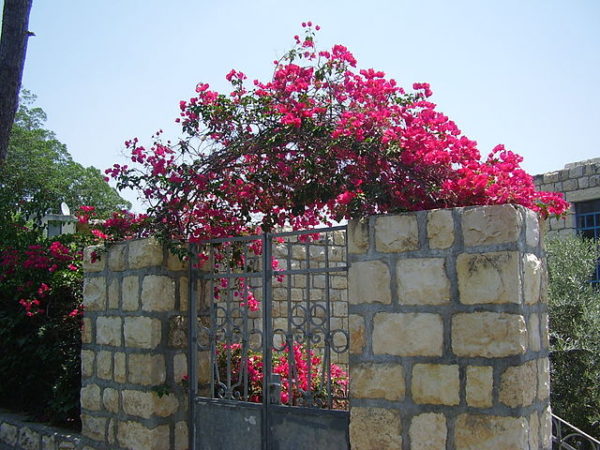
Set amid gentle hills and groves of olive trees that remind a visitor of southern California, it’s home to about 600 inhabitants, most of whom are painters, sculptors, writers and musicians.
My guides here were two of its residents — Naomi Verchovsky, a potter, and Dan Ben-Arye, a sculptor. Verchovsky, originally from New York City, has lived in Ein Hod since 1974 and has had her own studio since 1982. Ben-Arye, a South African, arrived in the mid-1980s.
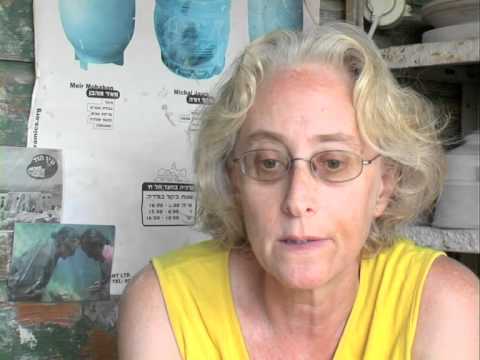
Verchovsky produces functional stoneware and teaches pottery classes. Her husband, a Latvian immigrant whom she met on a kibbutz in the Negev, runs a grocery store and a second-hand bookshop. Ben-Arye conducts guided tour of the village. His wife is a fabric designer from Safad.
“We’re a very mixed group in terms of age and ethnic origin,” said Verchovsky. “We absorb people from alternative lifestyles, not too square, not your usual people. There are a lot of characters here.”
Members of Ein Hod are approved by an absorption committee. Candidates who pass muster must live here for a minimum of six months and present an acceptable public exhibition.
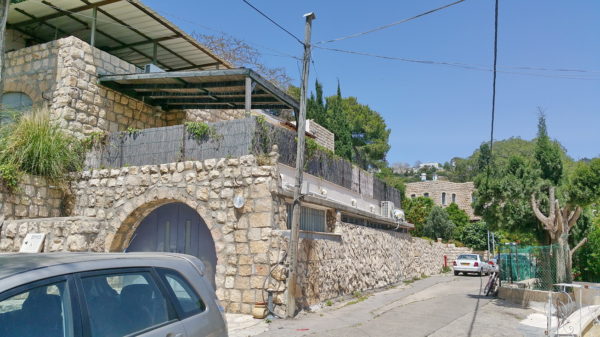
By Ben Arye’s count, Ein Hod has 18 galleries and workshops, as well as 14 bed-and-breakfast establishments. Israeli art flourishes here. “You won’t find a label saying Made in China here,” said Ben-Arye. “Everything is authentically Israeli.”
Eid Hod owes its existence to Marcel Janco (1895-1984), one of the founders of the Dada movement, which had a huge impact on 20th century art. An architect and a painter, and a contemporary of Pablo Picasso, he was born in Bucharest and spent his formative years in Zurich, Switzerland.

Rejecting the esthetics of Western painting and sculpture, he and a group of friends created the Dada movement. He returned to Romania in 1922, but fled to Palestine — a British Mandate — in 1941. Ein Hod was then the Palestinian village of Ein Hawd. During the first Arab-Israeli war in 1948, many of its approximately 1,000 Arab residents fled. Tunisian and Algerian Jewish immigrants were resettled in their place, but many left.
Janco, captivated by its vistas, persuaded the Israeli government to let him build an artists’ colony in Ein Hod. Meanwhile, a small number of its former Arab residents built a new village on higher ground nearby. It was unrecognized for decades, but in 2005, the government granted it full recognition.

During the final years of his life, Janco launched a campaign to build a Dada museum in Ein Hod. He died 10 months after its opening. The two-storey Janco Dada Museum, encased in an ultra-modern shell, is a showcase for Janco’s cutting-edge oils on cardboard, plywood and canvas.
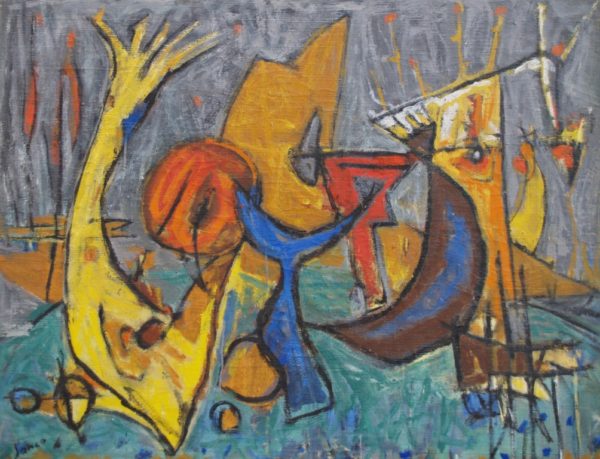
The Nesco Museum of Mechanical Music, containing one of the finest collections of antique music boxes and mechanical musical instruments, is worth visiting too.
On weekends throughout the year, Ein Hod hosts free outdoor jazz concerts in its central square and at an amphitheater near the ruins of a Crusader wall that once snaked around the village.
